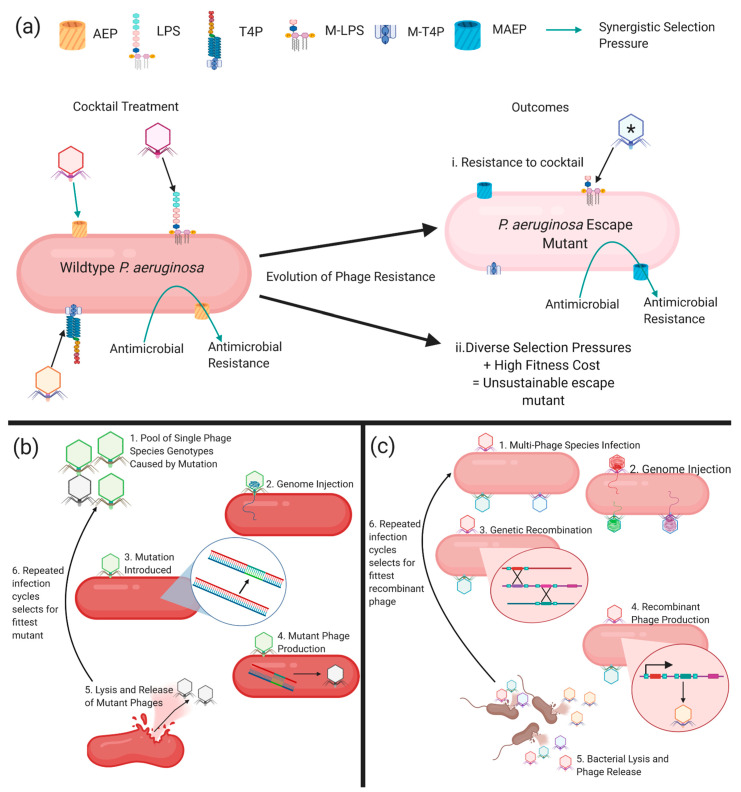Figure 2.
(a) The rationale for strategic cocktail formulation. Cocktails contain phages that use different receptors like lipopolysaccharide (LPS), type IV pili (T4P,) or antimicrobial-resistant determinants (antibiotic efflux pumps; AEP) so that their addition with antimicrobials provides opposite and synergistic selection pressures. This will result in outcome i, where resistance arises to the phage cocktail through mutations that alter the availability of phage receptors. For example, this outcome may result in a mutated LPS (M-LPS), a mutated T4P (M-T4P), and a mutated antibiotic efflux pump (MAEP) with conserved efflux function. This outcome can be prevented by adding the phage (denoted by *) to the cocktail that specifically kills the escape mutant, therefore forcing further different mutations in the bacteria, which could result in outcome ii, whereby the selection pressures are so diverse and come with a high fitness trade-off that resistance is unsustainable. (b) Phage evolution by spontaneous small mutation during DNA replication. (c) Phage evolution by genetic recombination between multiple phages. Created with BioRender.com.

